As uber-frequent travelers between Hawaii and the mainland for decades, BOH editors have developed a reliable system for bringing food on these long flights. No matter which class of service, it has been a constant that greatly improves our travel experience.
Airline food, while sometimes serviceable, has increasingly fallen short over the years in terms of quality, timing, or simply meeting personal dietary needs. We’ve learned that catering at least some of our own food not only ensures we eat what we like but also gives us better control over meal timing and nutrition.
This article shares our approach to personalizing in-flight meals for a more enjoyable and stress-free journey. We look forward to hearing what works for you and how you do it!
Why create your own airline food.
Bringing your own food on flights offers multiple advantages, from healthier, better-tasting options to complete control over meal quality. Many travelers struggle with the limited choices on board, where dietary needs like gluten-free, vegetarian, or low-sodium options may not always be available. Even when they are, the meals are often lackluster.
Beyond taste and nutrition, bringing our own meals allows us to control when we eat. Airline schedules don’t always align with Hawaii traveler hunger cues, and heavy meals served at high altitudes can contribute to digestive discomfort.
Research suggests that reduced air pressure and lower humidity at high altitudes slow down digestion, making heavier meals harder to process. By catering your own meals, you can avoid these potential issues and enjoy fresh food on your own terms.
What foods work best for Hawaii flights.
Not all foods travel well, and we’ve learned that the hard way over the years. TSA guidelines can sometimes complicate things—like the time we mistakenly packed yogurt, only to have it confiscated at security. Now, we know better and buy items like yogurt after passing through TSA.
We’ve found that solid, compact meals work best. Pre-made wraps and sandwiches are great because they’re easy to eat without making a mess. Salads, as long as the dressing is under 3 oz, are light, refreshing, and a welcome change from what airlines typically provide. Snacks like nuts, dried fruits, and crackers also serve as simple, satisfying bites between meals.
Some of our favorite options include casseroles and pasta dishes that don’t contain highly perishable ingredients. These meals are hearty, filling, and travel well without refrigeration for several hours.
Packing and preparation tips.
Packing food for a flight requires some basic planning to avoid messes and keep everything fresh. We’ve settled on using reusable plastic containers with tight lids. The ones that are used on the outbound flight get reused on the return flights.
Anything that could leak goes into plastic bags, and everything is packed inside a smallish insulated bag, which qualifies as a personal item rather than carry-on luggage. The packed insulated bag goes into the refrigerator for a few hours before travel for extra cooling.
You can rely on ice packs to keep food cold, but note that the ice packs must be frozen solid when passing through security. If they’re even slightly thawed, TSA may confiscate them. For meals that don’t require cooling, we pack them as is and rely on our airtight containers to keep things fresh.
One of editors’ favorite meals for morning flights is a salmon bagel, which has become something of a tradition.
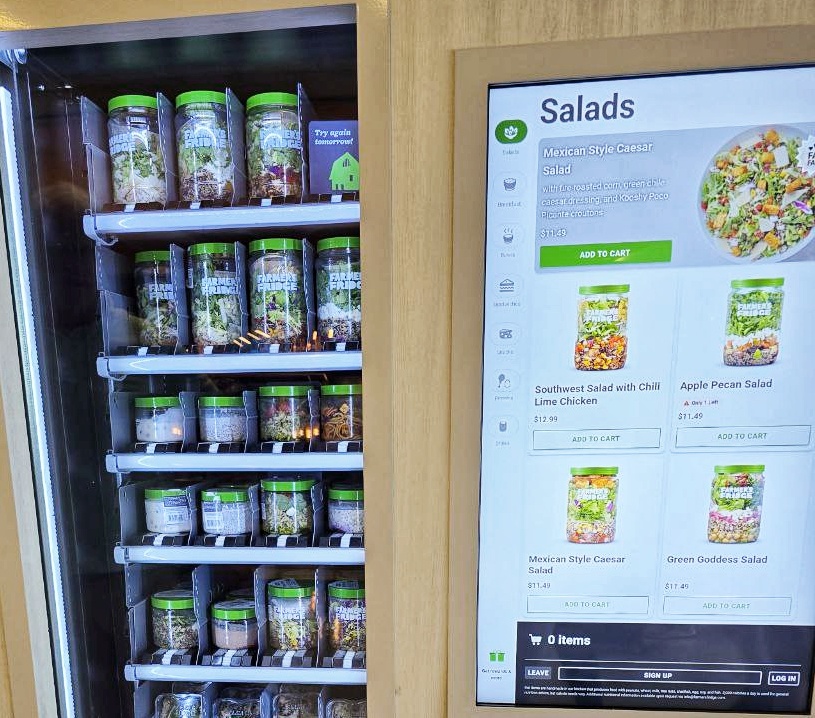

Grabbing food on the go when returning.
We are also seeing more healthy choices at airports. For example, the vending machine above had many food options for our flight from Dallas to Kauai.
When you’re heading back from your Hawaii vacation—whether you’ve stayed in a hotel without a kitchen or simply don’t have time to prepare food—it’s still possible to bring quality meals onboard without relying on airline food. We’ve often stopped at local food stores, takeout restaurants, or even the airport to pick up something fresh and pack it for the flight.
From grocery stores with ready-made options, takeout spots, or even certain airport restaurants and stores can provide solid options. We scour them all and try to pick the best options.
Salads, sandwiches, sushi, and other pre-packed meals are often available.
Even if you don’t have time to plan ahead, you can still avoid the pitfalls of in-flight meals by making a quick stop for something fresh and delicious before boarding.
Best practices for in-flight dining etiquette.
While bringing your own food onboard can greatly improve your flight experience, it’s important to be mindful of fellow passengers in tight spaces. Avoid foods with strong odors and pack compact meals that are easy to handle without taking up too much space. Timing is also a consideration—we often choose to eat when others are served to keep things courteous and discreet.
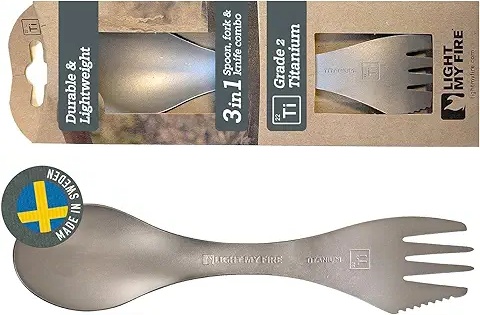

Our favorite utensil discovery has been titanium sporks. These all-in-one tools are indestructible, highly versatile, and a one-time investment. We also bring paper towels, which are indispensable for cleaning up spills, wiping hands, or even serving as makeshift napkins.
TSA and USDA food regulations to remember for Hawaii flights.
Try to stay updated on TSA food guidelines and airline-specific policies regarding food. Generally speaking, all solid foods are allowed through security, but liquids and gels, including items like yogurt or soups, must adhere to the 3.4 oz limit. Frozen items, which we have found are too slow to defrost aloft, are acceptable as long as they’re fully frozen at the time of screening.
USDA regulates fresh fruit and vegetables that can be brought from Hawaii to the U.S. mainland, and both checked and carry-on bags are subject to inspection. While whole produce in most cases cannot be brought (though pineapple can be an exception), fruit salad is perfectly acceptable.
Final thoughts on eating at 30,000 feet.
Bringing your own food on flights can completely transform the in-flight experience, providing meals that cater to your dietary needs and preferences. Whether you’re trying to eat healthier, avoid food you dislike, or add a touch of gourmet luxury to your journey, catering your own meals onboard is a smart, satisfying solution.
We hope this encourages you to give it a try, and we’d love to hear from fellow travelers about their favorite in-flight food hacks or recipes. Traveling should be enjoyable, and with the right food, even a long-haul flight can become something to look forward to.
Get Breaking Hawaii Travel News
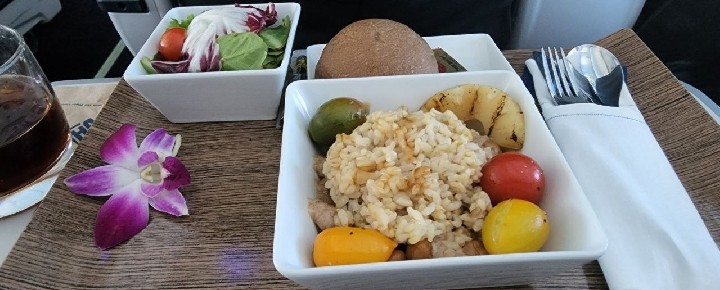
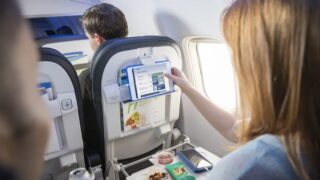
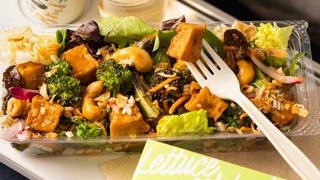



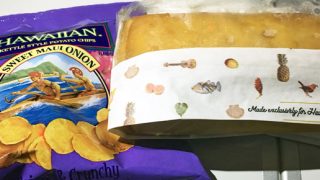
We always pick up the local food to eat on the plane home. Kansas City BBQ, New Orleans po’boys, In-N-Out Burgers, 808 Grindz Breakfast
of Rainbow French Toast or Seafood Omelet. Awesome food makes for a great flight.
We have been taking our own food for years. It usually saves us money, especially when we are traveling with 4 children. We get better food too. Sandwiches are our go to for the ease of transportation and we get them on the way to the airport so refrigeration is not an issue. We also often cut up fruit like apples and make sure it is all eaten before leaving the plane if we are inbound for Hawai’i.
Don’t know how healthy they are but I pack a couple of Chick Fil A biscuits and an Italian sandwich on the outbound leg and a large pack of Kimbap or Futomaki on the return, easy to eat and filling.
Best Regards
Our family has several members with food allergies so we always carry our own food. We usually pack sandwiches because they are compact and easy to consume on board. I use the blue ice blocks to keep them cold (if they are frozen they don’t usually defrost well) In addition to that we like to take sliced fruits or vegetables, and our favorite flax chocolate brownie muffins. I also pack two treat bags for my grandson-one for the flight to Hawaii and one for the flight home. We’ve been doing this for years, and only once have we had a problem.
Make me happy and open an L&L, or Zippy’s take out in the food court After security…I’d be happy to carry on my own plate lunch. Laulau here we come!
Watch what fruit you cut up for salad. Even cut up strawberries or blueberries can be confiscated because the seeds are intact.